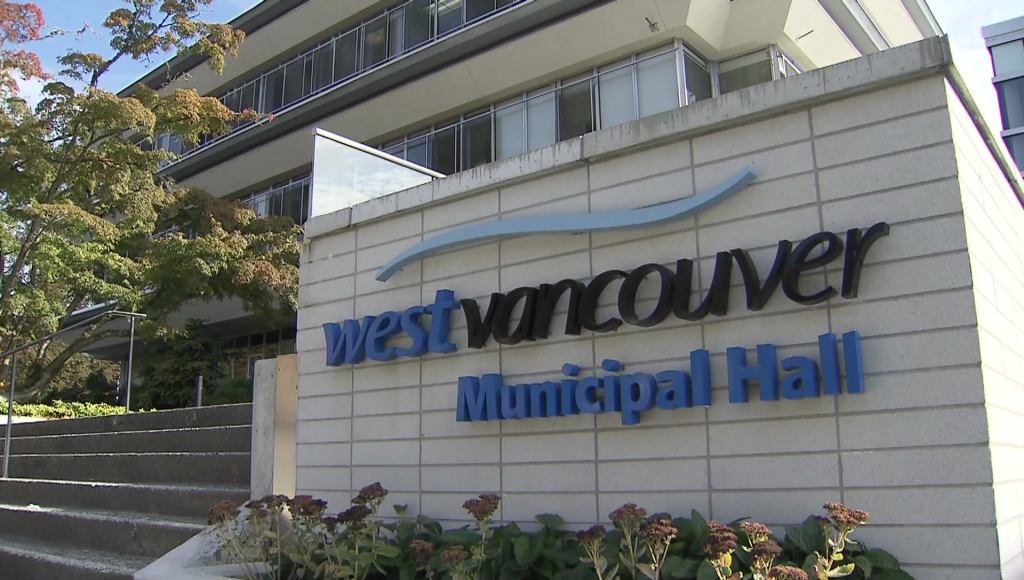West Van to request extension on B.C. housing legislation compliance

Posted July 30, 2024 11:30 am.
Last Updated July 30, 2024 11:33 am.
Days after the province put the District of West Vancouver on notice, the municipality is asking for an extension to align with housing legislation aimed at increasing small-scale multi-unit (SSMU) builds.
The district was sent a 30-day non-compliance notice last week to make necessary bylaw changes or else “a ministerial order could be issued.”
Councillors on Monday came to the consensus that more time was needed. During the district’s meeting, councillors’ availability during the next month, including vacation dates in August, were noted as reasons why the municipality may not be able to move into compliance within the 30-day notice.
However, some people don’t feel an extension is necessary. Jennifer Bradshaw, a director at Abundance Housing Vancouver, says the deadlines given to municipalities have already been reasonable.
“The province is basically telling them, ‘Enough is enough, we need you to pull your weight and start building housing,’ especially where there already is a lot of transit infrastructure, like bus stations, rapid transit, etc.,” Bradshaw told 1130 NewsRadio.
“The provincial government is trying to fundamentally increase housing, especially in West Vancouver and the City of Vancouver,” she continued. “And a lot of these older municipalities, not in the Fraser Valley, have not really been pulling their weight when it comes to housing production.”
This is particularly the case in some areas of Metro Vancouver and West Vancouver, she noted, pointing to neighbourhoods like the British Properties, which are low-density.
“There isn’t enough housing here and we see that with prices, prices being much higher in Metro Vancouver areas, and that reflects on demand from all the people who want to live here,” she explained.
“The problem is, when the District of West Vancouver tried to protect these very low-density luxury areas, because those people like the exclusivity, like the exclusion of that low density, it means that only rich people can live around them, because people who live in apartments, can only afford apartments can’t live there because there are no apartments there, that exclusion is paid for by everybody else.”
Bradshaw says she feels the government is doing the right thing by “putting its foot down” to push municipalities to build more housing.
On Thursday, July 25, Housing Minister Ravi Kahlon said the legislation aimed at fixing outdated zoning rules had been adopted by almost 90 per cent of communities. SSMU housing includes row homes, triplexes, and townhouses.
Out of 188 municipal governments, 162 had adopted the SSMU legislation through local bylaws, the province said, adding another nine were “actively working to adopt the legislation.”
The B.C. government explains that SSMU housing “creates more options for the kinds of housing people are looking for.”
As part of B.C.’s Homes for People plan, the SSMU legislation was passed in November 2023. A month later, the province says local governments were provided with regulations and policy manuals to support them in the implementation of new rules, “with a deadline for local governments to amend local bylaws by June 30, 2024.”
Two B.C. communities — the District of Wells and the Northern Rockies Regional Municipality — have been given extensions due to wildfire impacts.
Bradshaw says, in the case of West Vancouver specifically, an extension doesn’t seem warranted.
“I think a lot of these deadlines have already been feasible and I don’t really think that extensions are all that necessary,” she told 1130 NewsRadio. “Ultimately, what councils like to try and do, is try and add other types of obstacles — things like zoning bylaws, zoning can provide or prevent housing, but there are other bylaws they can also add to try and prevent housing, as well.
“Ultimately, this is not just about housing equity and equitable access to jobs, for example. It’s also about climate. We’re talking about how people who live in apartments tend to drive less, they tend to use public transit more, and having more homes near these rapid transit areas makes so much sense from a climate perspective.”








